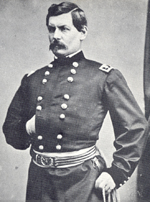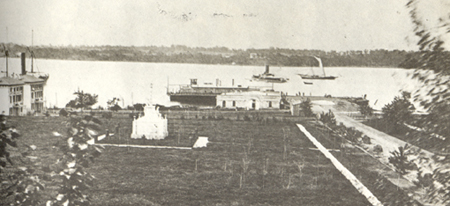A Federal Plan for a Sea-Borne Invasion
In early September of 1861, General George B. McClellan, in command of the Army of the Potomac meets with General Ambrose Burnside. The two men discuss the possibility of raising a "Coast Division" by Burnside. The force, it is hoped, will be made up of regiments whose men are familiar with the seafaring life. The division would be transported by shallow draft boats to points along the Chesapeake Bay. The Bay secure, the division would move to strategic objectives along the North Carolina coast.
McClellan decides that the expedition will be used directly against objectives in Coastal North Carolina. Burnside will first capture and hold Roanoke Island, then move against New Bern and Fort Macon. After securing these important points the Division will thrust inland in an attempt to severe rail supply lines feeding the Confederate Army in Northern Virginia.


General George B. McClellan General Ambrose E. Burnside
Burnside is soon immersed in organizing his small army. He has to secure his own troop transports, gun boats and supply ships. He sends requests to the Governors of New England states for regiments of men that have a knowledge of the sea. The regiments begin assembling outside the town of Annapolis, Maryland. Due east of Washington, D.C., Annapolis is situated along the banks of the Severn River and is home for The United States Naval Academy. The Severn is a tributary of the Chesapeake Bay which in turn empties into the Atlantic Ocean at Hampton, Virginia.

Period photo shows part of the grounds of The U.S. Naval Academy. Some of Burnsides troops will use Naval Academy docks to board troop transports anchored in the Severn River.